
This task helps children explore multidigit computation with arrays and/or repeated addition.
- Subject:
- Elementary Education
- Material Type:
- Activity/Lab
- Author:
- RunningHorse Livingston
- Date Added:
- 05/19/2023

This task helps children explore multidigit computation with arrays and/or repeated addition.

Students use this puzzle to practice 2-digit addition. There are two puzzles: one without regrouping and one with regrouping. These puzzles make a great math station/center as students are able to independently check their work. Students can also use this resource as a math choice for when they finished their work.
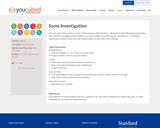
This task/game allows students to practice addition while also thinking about ways to organize counting by randomly selecting two (two-digit) number cards and finding the sum. In addition, students are prompted with guiding questions to promote discourse. In closure, students use writing to reflect on their learning and thinking strategies during the game.

According to Achieve the Core, (achievethecore.org), "The joint purpose of this task is to provide students an opportunity to practice two-digit subtraction with regrouping and to engage students in looking for and expressing regularity in repeated reasoning (MP.8). Throughout grade 2, students need many opportunities to practice subtraction in order to achieve fluency subtracting within 100 by the end of the grade. For students in grade 2, it is sufficient for them to recognize that differences of 9 will stem from numbers whose digits differ by 1, subtractions resulting in 18 will stem from numbers whose digits differ by 2, etc. "

Okta challenges you to a duel! That crazy octopus wants to play you in a game where the first person to choose cards with a specified sum wins. You can choose how many cards, what types of numbers, and Okta's level of strategy.
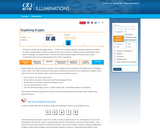
The rules of Krypto are amazingly simpleäóîcombine five numbers using the standard arithmetic operations to create a target number. Finding a solution to one of the more than 3 million possible combinations can be quite a challenge, but learners love it. This game helps to develop number sense, computational skill, and an understanding of the order of operations. Play this game online or use a deck of Krypto cards.
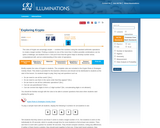
This lesson plan provides the teacher with an activity for introducing the game Krypto, which helps to develop number sense, computational skill, and an understanding of the order of operations. Players are given five number cards. They combine them, using the standard arithmetic operations, to create a target number. As students investigate the game, they develop strategies for finding solutions efficiently. The plan includes learning objectives, materials needed, questions to ask students, assessment options, extensions, teacher self-reflection questions, and a link to the online version, Primary Krypto, (catalogued separately).
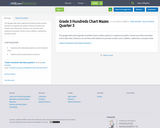
This google slide show organizes hundreds charts number puzzles in a sequence by weeks. Puzzles are online and linked to this slide show. Teachers can use these with students to promote number sense, addition, subtraction, and place value.

Module 2 uses place value to unify measurement, rounding skills, and the standard algorithms for addition and subtraction. The module begins with plenty of hands-on experience using a variety of tools to build practical measurement skills and conceptual understanding of metric and time units. Estimation naturally surfaces through application; this transitions students into rounding. In the modules final topics students round to assess whether or not their solutions to problems solved using the standard algorithms are reasonable.
Find the rest of the EngageNY Mathematics resources at https://archive.org/details/engageny-mathematics.
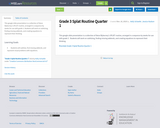
This google slide presentation is a collection of Steve Wyborney's SPLAT! routine, arranged in a sequence by weeks for use with grade 3. Students will work on subitizing, finding missing addends, and creating equations to represent their thinking.

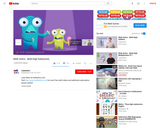
This instructional video presents multi-digit subtraction. The presentor begins with basics such as setting up the problem and keeping columns alligned. High intertest visuals are used to present the concept of going 'next door' to borrow from the next place column. Colors and highlighting keep the audience focused on each step in the process. Road blocks such as finding a zero in a neighboring column are also addressed.

(Nota: Esta es una traducción de un recurso educativo abierto creado por el Departamento de Educación del Estado de Nueva York (NYSED) como parte del proyecto "EngageNY" en 2013. Aunque el recurso real fue traducido por personas, la siguiente descripción se tradujo del inglés original usando Google Translate para ayudar a los usuarios potenciales a decidir si se adapta a sus necesidades y puede contener errores gramaticales o lingüísticos. La descripción original en inglés también se proporciona a continuación.)
El módulo 2 utiliza el valor del lugar para unificar la medición, las habilidades de redondeo y los algoritmos estándar para la adición y la resta. El módulo comienza con mucha experiencia práctica utilizando una variedad de herramientas para desarrollar habilidades prácticas de medición y comprensión conceptual de las unidades métricas y de tiempo. La estimación surge naturalmente a través de la aplicación; Esto hace transición a los estudiantes al redondeo. En los temas finales del módulo, los estudiantes redondean para evaluar si sus soluciones a los problemas resueltos utilizando los algoritmos estándar son razonables.
Encuentre el resto de los recursos matemáticos de Engageny en https://archive.org/details/engageny-mathematics.
English Description:
Module 2 uses place value to unify measurement, rounding skills, and the standard algorithms for addition and subtraction. The module begins with plenty of hands-on experience using a variety of tools to build practical measurement skills and conceptual understanding of metric and time units. Estimation naturally surfaces through application; this transitions students into rounding. In the modules final topics students round to assess whether or not their solutions to problems solved using the standard algorithms are reasonable.
Find the rest of the EngageNY Mathematics resources at https://archive.org/details/engageny-mathematics.
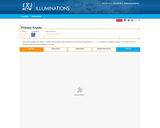
In this online version of the popular card game, students combine five given number cards, using the four arithmetic operations (addition, subtraction, multiplication, division), to arrive at a target number. This version uses the numbers 1–10 only. Users may ask for a hint or view a possible solution, although there are often multiple solutions.
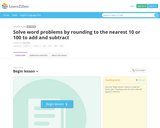
Big Ideas: Rounding is an appropriate strategy for solving problems and estimating. Numbers can be decomposed and recomposed to add and subtract.
This lesson builds on student knowledge of place value of whole numbers less than or equal to 1000. This task uses a range of weights for endangered animals for students to apply rounding principles to make totals of 1000 and 2000 using addition and subtraction strategies. This builds conceptual understanding of rounding to build upon for practical use for problem solving using addition, subtraction, multiplication, and division.
Vocabulary: base-ten, expanded form, place value, accurate, complements, commutative property, partial sums